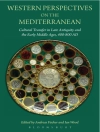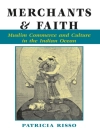‘Human beings, ‘ the acclaimed Egyptologist Jan Assmann writes, ‘are the animals that have to live with the knowledge of their death, and culture is the world they create so they can live with that knowledge.’ In his new book, Assmann explores images of death and of death rites in ancient Egypt to provide startling new insights into the particular character of the civilization as a whole. Drawing on the unfamiliar genre of the death liturgy, he arrives at a remarkably comprehensive view of the religion of death in ancient Egypt.Assmann describes in detail nine different images of death: death as the body being torn apart, as social isolation, the notion of the court of the dead, the dead body, the mummy, the soul and ancestral spirit of the dead, death as separation and transition, as homecoming, and as secret. Death and Salvation in Ancient Egypt also includes a fascinating discussion of rites that reflect beliefs about death through language and ritual.
Table of Content
CONTENTS
Translator’s Note
Introduction: Death and Culture
1. Death as Culture Generator
2. Principal Distinctions in the Relationship Between Death and Culture
a) This Life and the Next Life as Lifetime-encompassing Horizons of
Accomplishment
b) Death Pieced-on to Life and Life Permeated by Death
c) World of the Living, World of the Dead: Border Traffic and Exclusion
d) Images and Counterimages, Death and Counterworld
Part One. Images of Death
Chapter 1. Death as Dismemberment
1. The Opening Scene of the Osiris Myth
2. The Egyptian Image of the Body
3. Salvation from Death by Piecing Together
Chapter 2. Death as Social Isolation
1. The Physical and Social Sphere of Man
2. ‘One Lives, if His Name is Mentioned
3. ‘One Lives, if Another Guides Him’
4. Subjection to Death through Social Isolation
5. ‘I Am One of You’: Salvation from Death through Inclusion
Chapter 3. Death as Enemy
1. The Lawsuit in Heliopolis
2. The Moralizing of Death: The Idea of the Judgment of the Dead
3. Death as Enemy and the Life-giving Significance of the Judgment of the Dead
Chapter 4. Death as Dissociation: The Person of the De ceased and Its Constituent Elements
1. The Ba
a) The Ba in the Sky, the Corpse in the Netherworld
b) The Uniting of Ba and Corpse
2. The Deceased and His Ka
3. The Heart
4. Image and Body
a) Image and Death, Statue and Mummy
b) Reserve Head and Mummy Mask
c) Shabty and Golem
Chapter 5. Death as Separation and Reversal
1. Separation from Life: Death as Parting and Inversion
a) The Widow’s Lament
b) Death-‘Come!’ is Its Name
2. Out of the Realm of Death and into the Place of Eternal Nourishment
a) The Food of Life
b) The Dialogue Between Atum and Osiris
3. Inversion as a State of Death
Chapter 6. Death as Transition
1. Transition as Ascent to the Sky
2. Transition as Journey to Osiris
3. Assistance from Beyond: The Image of Death as Transition and the Realm of the
Living
Chapter 7. Death as Return
1. Nut Texts: Laying to Rest in the Coffin as Return to the Womb
a) The Inscription on the Coffin of King Merneptah
b) Goddess of the Coffin, Goddess of the West, Goddess of the Tree: Figurations
of the Great Mother
c) Renewal and Vindication: Re and Osiris
2. ‘The Place Where My Heart Returns’: The Tomb in the Homeland
a) Return to the Tomb
b) Death as Return and the Mystery of Regeneration
Chapter 8. Death as Mystery
1. The Mystery of the Sun: Renewal and Rebirth
2. The Mystery of Osiris
3. The Tomb as Sacred Place
4. Initiation and Death
9. Chapter 9. Coming Out by Day
1. This Life as the Afterlife: The ‘Reversed Polarity’ of Mortuary Belief in the New
Kingdom
2. Festival and Garden as Elysian Aspects of the Realm of the Living
a) Visits Home
b) Visiting the Garden
c) Participation in Major Divine Festivals
Part Two. Rituals and Recitations
Chapter 10. Mortuary Liturgies and Mortuary Literature
1. Provisioning and Transfiguration: The Recording of Recitation Texts in Old
Kingdom Pyramids
2. Writing as Voice and Recollection: The Recording of Mortuary Texts in Middle
Kingdom Coffins and in the Book of the Dead
3. Greetings, Requests, and Wishes
Chapter 11. In the Sign of the Enemy: The Protective Wake in the Place of Embalming
1. The Night Before the Funeral
2. Coffin Texts Spell 62
3. Wakes and Coffin Decoration
Chapter 12. The Night of Vindication
1. Liturgy A, Part 1: The Judgment Scene
2. Liturgy A, Part 2: The Transfiguration of the Vindicated One
3. Liturgy A, Part 3: The Vindicated One as Companion of the Gods
4. Liturgy B: Embalming and Provisioning
Chapter 13. Rituals of Transition from Home to Tomb
1. Artistic and Textual Depictions of the Funeral
2. From Home to Tomb
a) Crossing Over to the West
b) Embalming, Cult Drama in the Sacred Temenos, and Rituals in the Garden
c) The Procession to the Tomb
3. The Rites of Opening the Mouth at the Entrance of the Tomb
a) The Opening of the Mouth Ritual
b) Setting up the Mummy ‘before Re’
c) Offering of the Heart and Leg
Chapter 14. Provisioning the Dead
1. Pyramid Texts Spell 373
2. Summoning the Dead
3. Presentation of Offerings
Chapter 15. Sacramental Explanation
1. On the Semantics of Transfigurative Speech
2. The Discharge of the Corpse of Osiris: On the Sacramental Explanation of Water
3. Mortuary Rituals for Egypt
Chapter 16. Freedom from the Yoke of Transitoriness: Resultativity and Continuance
1. Resultativity
2. ‘Trust Not in the Length of Years’: Salvation through Righteousness
3. ‘Make Holiday! Forget Care!’
Chapter 17.
1. Realm of Death and Elysium: The Oirignally Royal Sense of This Distinction
2. Redemption through Unio Liturgica
3. Salvation through Divine Grace
Afterword: Egypt and the History of Death
About the author
The late David Lorton, an Egyptologist, was the translator of many books, including Ancient Egypt in 101 Questions and Answers, The Secret History of Hermes Trismegistus, The Secret Lore of Egypt, and Akhenaten and the Religion of Light, all from Cornell.












